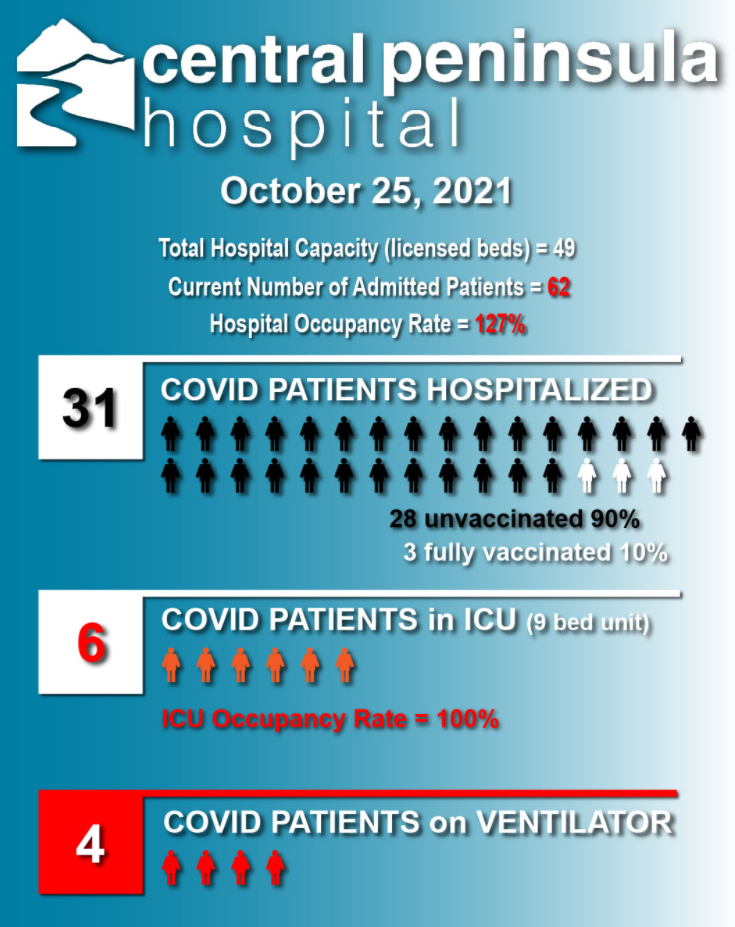The state Department of Health and Social Services, in the weekend update from Friday through Sunday, reported 1,686 new cases of COVID-19, 236 hospitalizations, and 5 additional deaths. The COVID deaths include a female Anchorage resident in her 70s, a female Anchorage resident in her 50s, a male Anchorage resident in his 50s, a male Kodiak resident in his 50s, and a male Wasilla resident in his 40s.
The weekend data release for COVId-19 numbers includes 1,661 resident cases and 25 nonresident cases. They include 59 cases in Soldotna, 54 in Kenai, 24 in Homer, 16 in Sterling, 9 in Kenai Peninsula Borough North, 7 in Nikiski, 6 in Kenai Peninsula Borough South, 4 in Anchor Point, and 3 in Seward.
There are currently 236 patients diagnosed with COVID-19 who are hospitalized and two additional patients who are considered persons under investigation (PUI) for a total of 238 current COVID-related hospitalizations. Thirty-four of these patients are on ventilators. The percentage of patients currently hospitalized with COVID-19 is 19.6%.

The current statewide alert level – based on the reported number of cases per 100,000 people over the past 7 days – is high (red) at 660.9. For boroughs and census areas: 25 areas are at the high alert level.
64.7% of Alaskans aged 12 and older have received at least their first vaccine dose. 59.9% of Alaskans aged 12 and older are fully vaccinated. 50.1% of the Kenai Peninsula Region are fully vaccinated.
NOTE: There is a lag between cases being reported on the DHSS data dashboard and what local communities report. Each case is an individual person even if they are tested multiple times. Total tests are a not a count of unique individuals tested and includes both positive and negative results. The current number of hospitalized patients represents more real-time data compared to the cumulative total hospitalizations. Current hospitalizations are reported for all facilities, not just general acute care and critical access facilities. Total number of hospital beds available fluctuate daily as the number of available hospital staff changes. Alert levels are provided to show trends and patterns over time as there can be substantial day-to-day variation in reporting of cases to DHSS. Alert levels show how widespread the virus is in a community relative to its population size and are a good tool to determine weekly trends for specific geographic areas. All data reported in real-time, on a daily basis, should be considered preliminary and subject to change.






